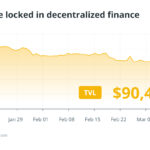In a significant move towards regulatory clarity for the cryptocurrency industry, the U.S. Securities and Exchange Commission (SEC) is actively engaging with crypto stakeholders to develop policies overseeing digital asset transactions. Speaking at the agency’s inaugural crypto-focused roundtable event, Commissioner Hester Peirce, who leads the SEC’s crypto task force, expressed optimism about crafting a workable framework for the diverse types of crypto assets in existence. Her comments came during the aptly named event, “Spring Sprint Toward Crypto Clarity.”
Peirce outlined the challenge ahead: effectively translating the characteristics of securities into a clear classification system applicable to a wide range of crypto assets, including those that may emerge in the future. In parallel, the SEC’s acting chairman Mark Uyeda discussed the current landscape, noting that while some segments, such as memecoins and mining, are not currently classified under securities laws, there remains a possibility for broader definitions.
“We’re moving on multiple tracks here,”
said Uyeda, highlighting the need for comprehensive interpretations from the commission, which currently operates with three members. His recent comments suggest a shift towards more proactive guidance over mere enforcement, particularly in light of the uncertainties raised by judicial opinions affecting market participants.
The roundtable also featured insights from a panel of securities attorneys who shared their perspectives on the intersection of crypto assets and securities laws. Notably, some panelists indicated that the evolving regulatory landscape has led early-stage projects to adopt behaviors reminiscent of traditional public offerings, aiming for more cautious market entry due to the looming influence of securities regulation.
“The specter of the application of securities laws has moved early-stage projects in the market to sort of take an arc very similar to [initial public offerings], where they stay private longer,”
stated Sarah Brennan from Delphi Ventures, pointing to the hesitation among companies to fully launch their technologies amid regulatory uncertainties.
Adding to the conversation, former SEC attorney John Reed Stark raised concerns that many existing crypto assets may lack substantial utility and could be heavily driven by speculation. Meanwhile, prior to the roundtable, a letter from Senator Elizabeth Warren and Representative Jake Auchincloss pressed the SEC for clarity on its recent statements regarding memecoins and questioned the involvement of the White House in their development.
As the SEC embarks on this important journey towards defining the rules for digital assets, both the industry and regulators are poised at a crucial juncture that may shape the future of cryptocurrency in the United States.

SEC Embraces Collaboration with the Crypto Industry
The U.S. Securities and Exchange Commission (SEC) is taking significant steps to clarify its stance on cryptocurrencies and how they are classified under securities laws. Here are some of the key points from recent discussions and developments:
- Collaboration with Crypto Industry:
- The SEC’s crypto task force, led by Commissioner Hester Peirce, is committed to working with stakeholders in the digital assets space.
- Goal: Develop a workable framework for overseeing crypto transactions and defining asset classifications.
- Definition of Securities:
- There is a focus on translating security characteristics into a taxonomy applicable to diverse crypto assets.
- Some memecoins and mining operations are not currently classified under securities laws, but this may change.
- Agency’s Approach:
- Acting Chairman Mark Uyeda emphasized the SEC’s willingness to provide public guidance and interpretations rather than relying solely on enforcement actions.
- Public statements from the SEC have created a space for further discussions on the classification of crypto assets.
- Impact on Crypto Projects:
- Uncertainty regarding securities laws is leading many startups to delay going public, mirroring traditional public offering processes.
- There are concerns that regulatory uncertainties may hinder market participation and innovation in the crypto space.
- Legislative Scrutiny:
- Senators have questioned the SEC regarding its recent memecoin policy, asking about communication with the White House and the rationale behind the staff statements.
- Clarification is sought on how memecoins are defined and differentiated from other cryptocurrencies.
This evolving regulatory environment may significantly impact investors and businesses involved in digital assets, shaping the future landscape of cryptocurrency use and investment in the U.S.
SEC’s Push for Crypto Clarity: Moving Towards a New Regulatory Landscape
The recent developments from the U.S. Securities and Exchange Commission (SEC) mark a significant shift in the agency’s approach to the regulation of digital assets. With Commissioner Hester Peirce at the helm of the SEC’s crypto task force, the commission is actively pursuing a comprehensive framework to classify different types of crypto assets. This willingness to collaborate with the burgeoning crypto industry sets the SEC apart from previous stances that seemed more focused on enforcement than guidance.
One competitive advantage of this new direction is that it could foster innovation within the crypto space. By establishing clear guidelines, the SEC may help startups and established companies alike navigate uncertain regulatory waters, making it easier for them to operate and grow. The potential classification of new assets as securities, particularly in areas that had previously remained unregulated, could also lead to enhanced investor protection, thereby boosting public confidence in the market.
However, this initiative is not without its disadvantages. The conversation around the classification of crypto assets raises questions over the operational impact on early-stage projects, which may be forced to adopt a more cautious approach akin to traditional IPOs. This could stifle innovation and limit the availability of accessible investment opportunities in a field that thrives on flexibility and rapid growth. Critics like John Reed Stark warn that many crypto projects still lack intrinsic utility, potentially clouding the industry’s future even if regulations evolve.
The approach taken by the SEC could largely benefit legitimate projects seeking to operate within legal parameters. Startups that can adapt to new rules may find a more supportive environment for growth, whereas those that struggle to comply could face significant setbacks. Additionally, traditional investors entering the crypto market might feel reassured by a clearer regulatory framework, thereby facilitating greater participation.
On the flip side, this ongoing dialogue could pose problems for businesses that rely on the current regulatory gray areas to thrive. Companies that have built their models around less scrutiny—such as memecoin projects—might find themselves under greater scrutiny as the SEC refines its definitions. Moreover, the shifting landscape may generate confusion among investors and entrepreneurs alike, especially if definitions and classifications evolve in unexpected ways.
Furthermore, the SEC’s recent roundtable discussions highlight tensions between innovation and regulation, emphasizing the fine line that the agency must walk. As legislators and industry participants closely monitor the situation, the SEC’s ability to foster a balanced approach will be scrutinized—a crucial element that could either enhance or undermine the potential of the crypto industry.
















